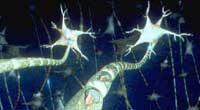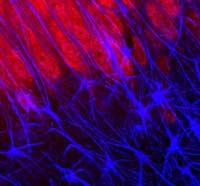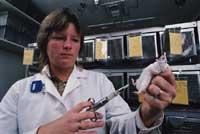Neurons jump over the barrier of closed wounds
2001/04/24 Galarraga Aiestaran, Ana - Elhuyar Zientzia
The cells that close the wound are astrocytes, that is, the supports of the neuronal structure. This barrier is also not only physical, as, according to a study by researchers at the University of Cambridge, astrocytes send chemical signals (chondroithin-sulfate-proteoglycans) to neurons that are being renewed to slow their growth.

Based on this earlier work, neurophysiologist Fawcett and his team tested for axone renewal. First, some rats suffered surgical wounds in the brain. Subsequently, some rats were subjected to an enzyme called chondroitinase ABC in the injured tissue, which calls chondroitin-sulfate-proteoglycans and observed that neurons in treated rats grew 6 times more than those in untreated rats. In addition, the growth was in the right direction: the axons of the rats treated with enzyme grew four times more than those of others in the right brain structure.
These works have been published in the journal Nature Neuroscience and, according to a new study not yet published, have obtained the same results with wounds in the spinal cord of rats.
There is still a lot of work to get proper treatment in humans, but these studies have awakened some hope among neurologists working on neuronal regeneration.

Gai honi buruzko eduki gehiago
Elhuyarrek garatutako teknologia






